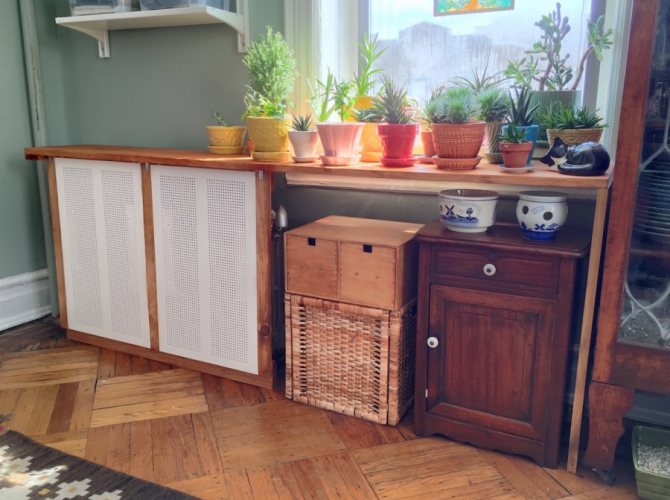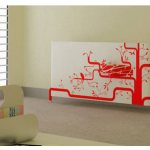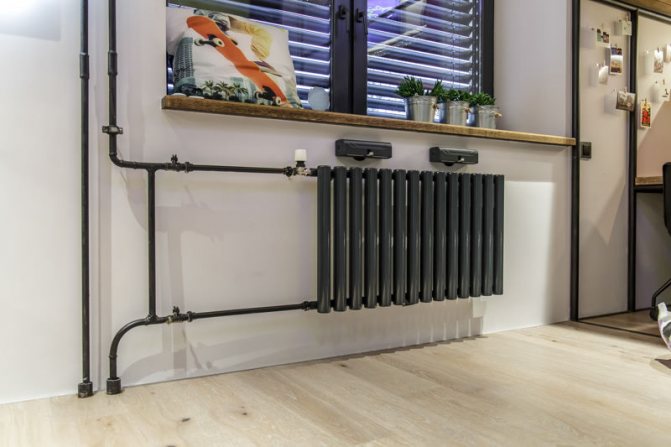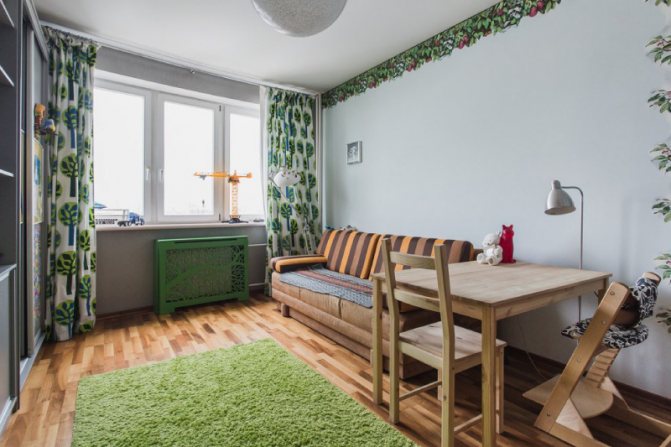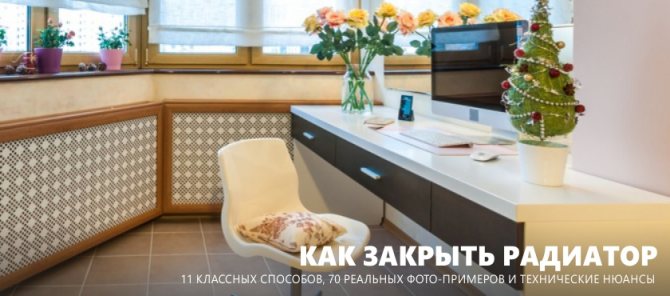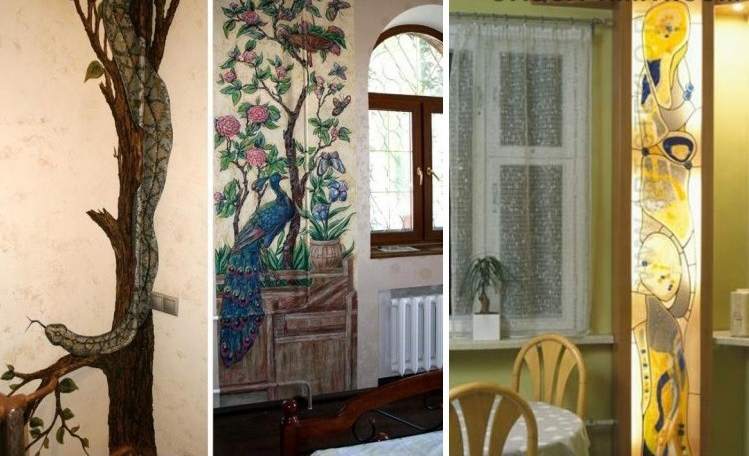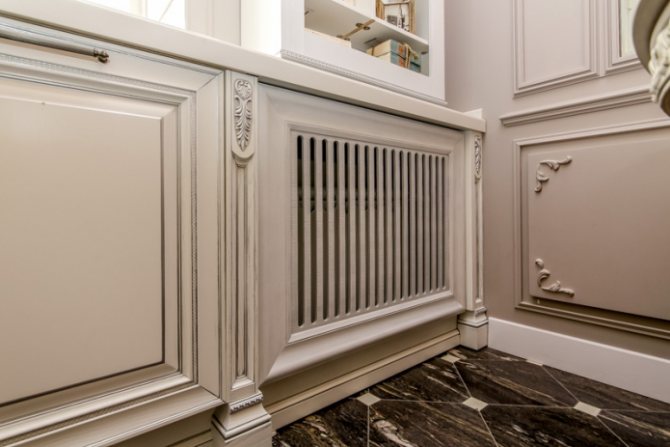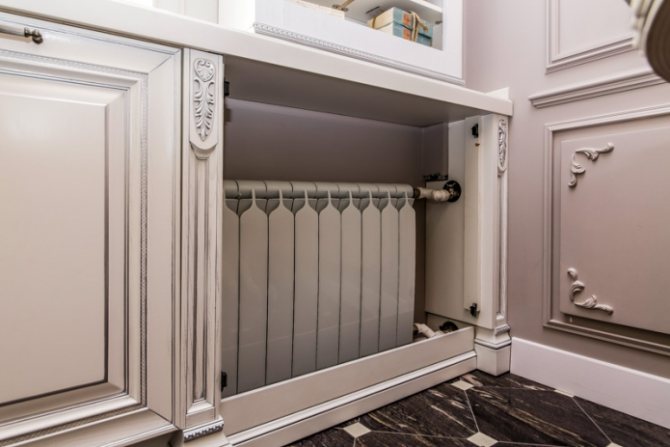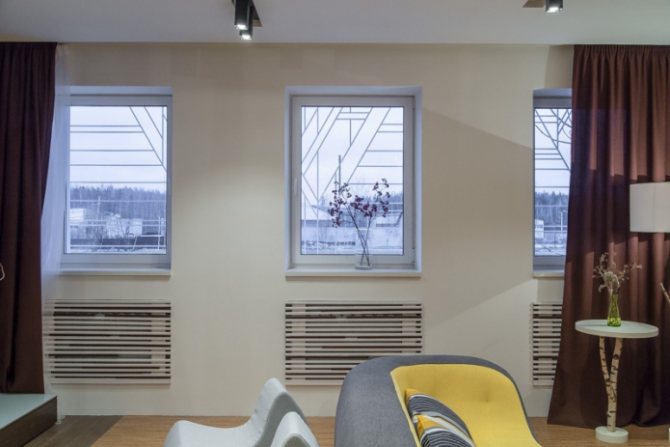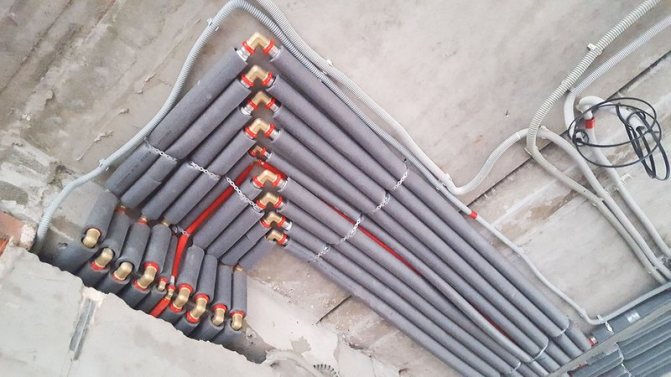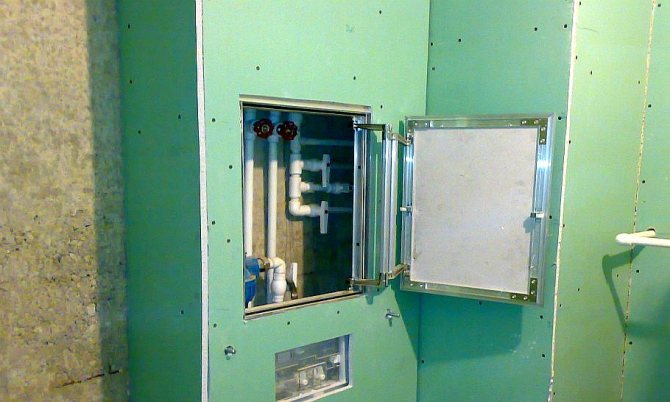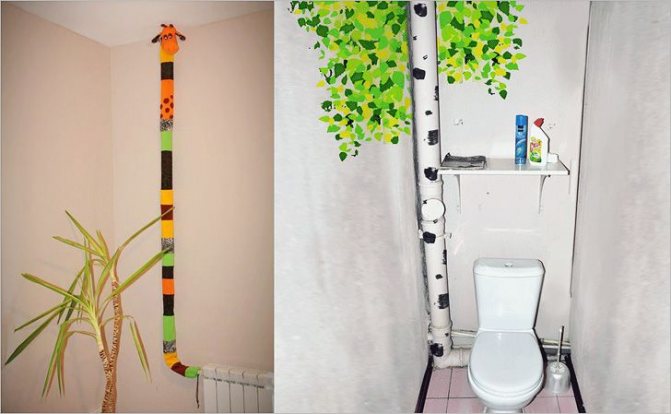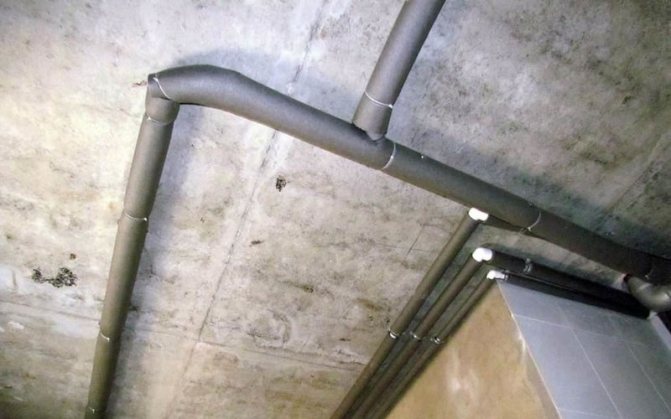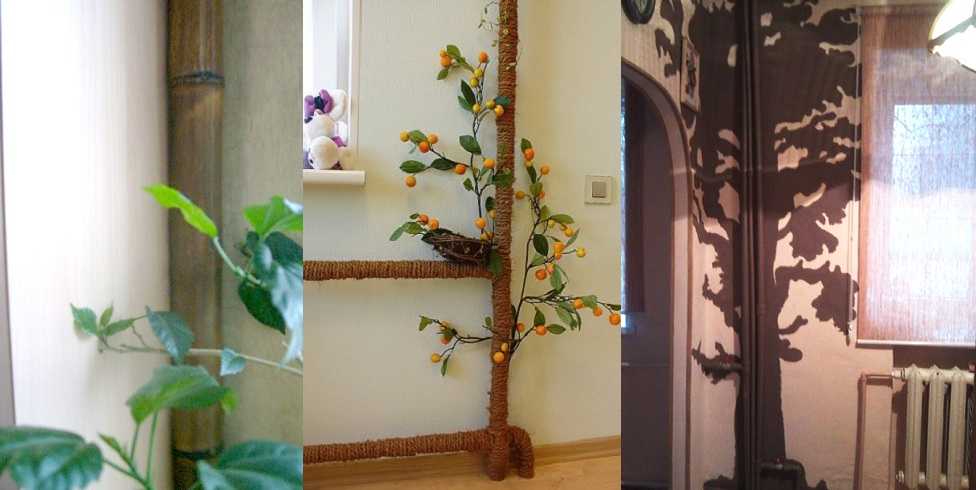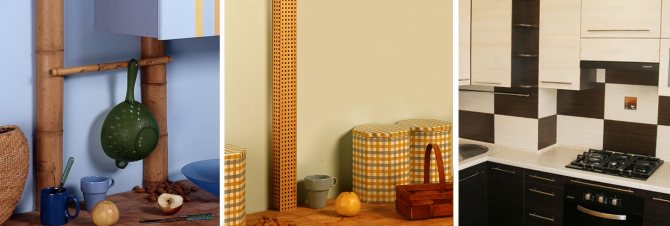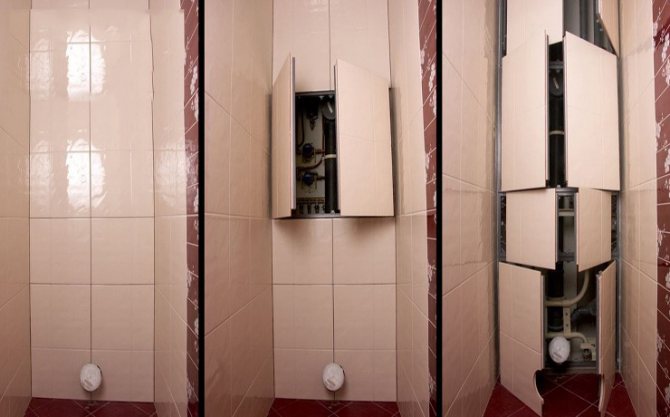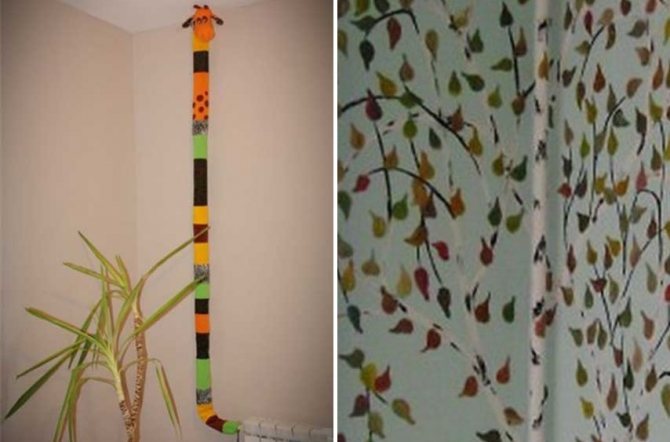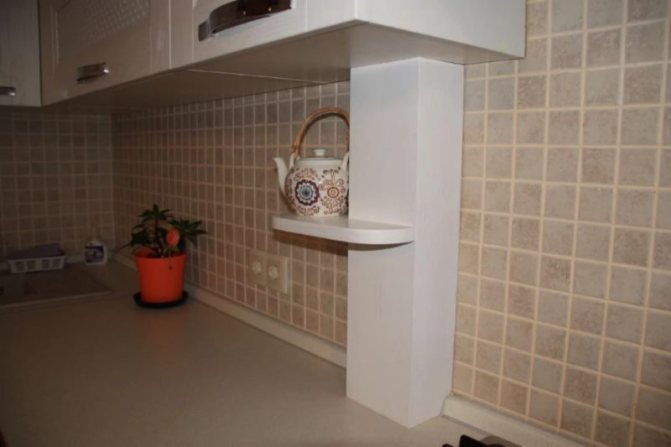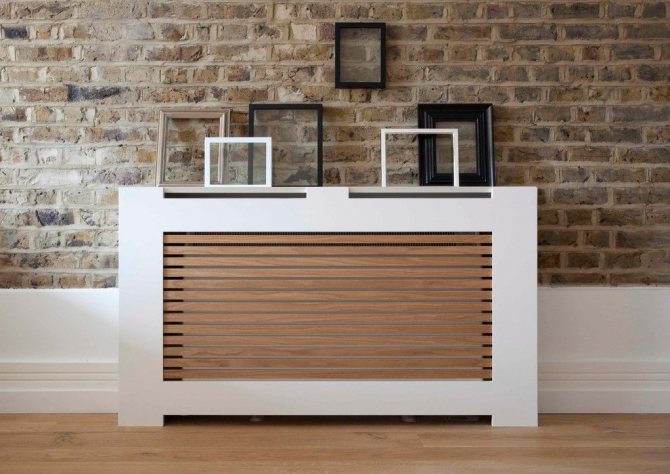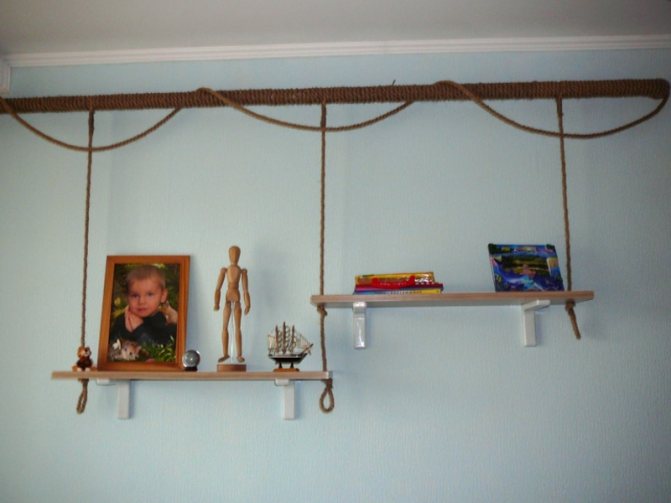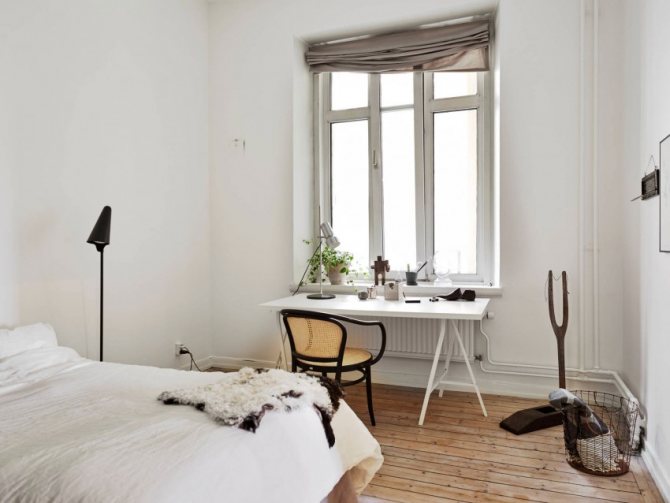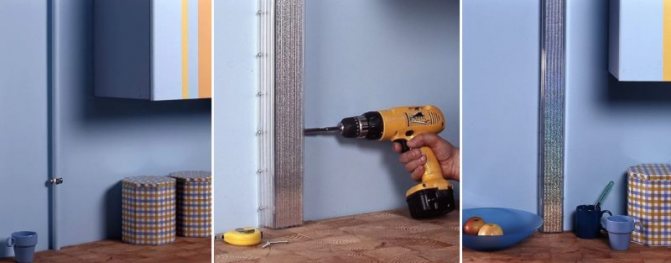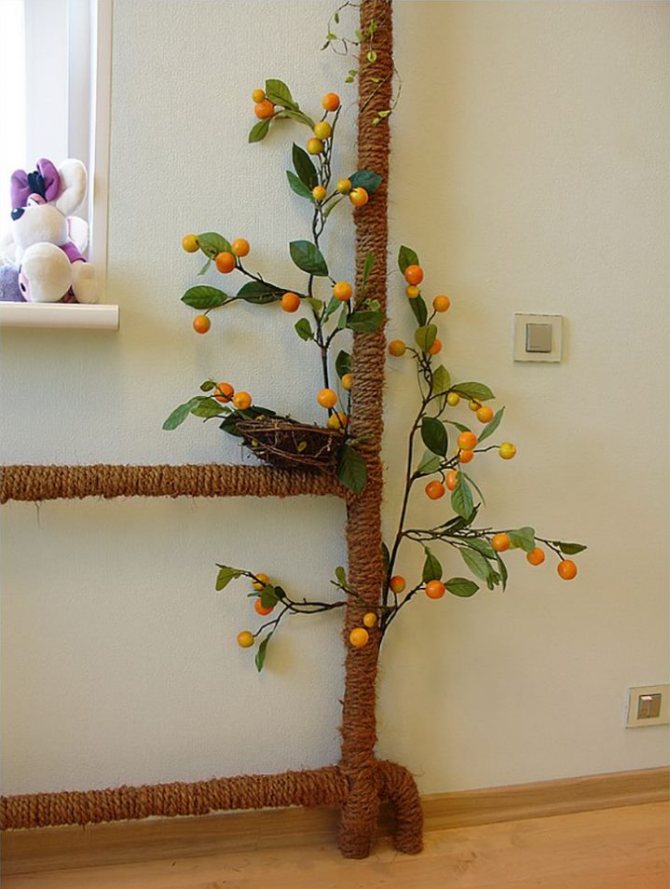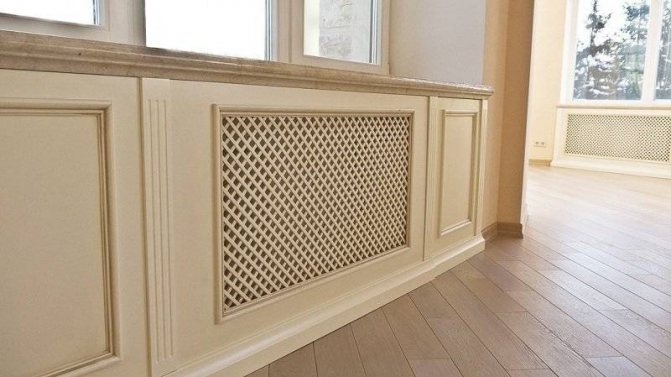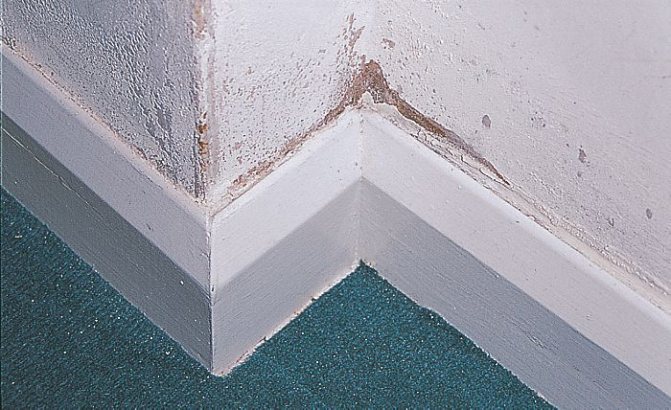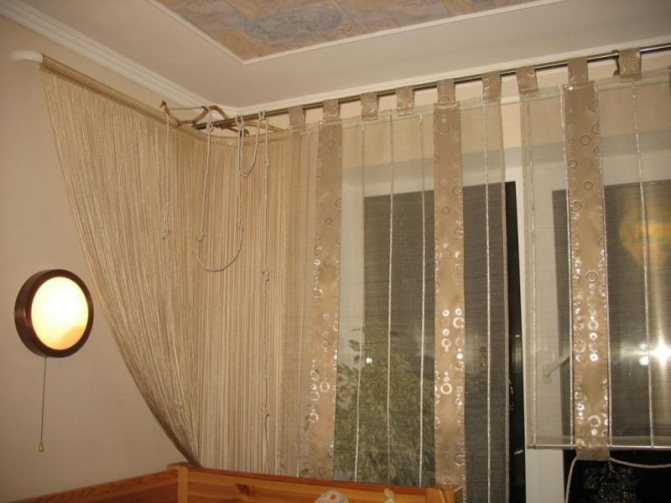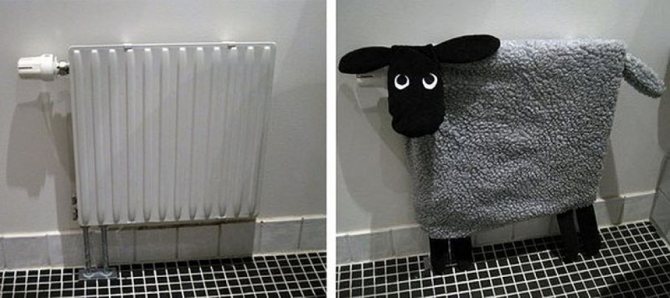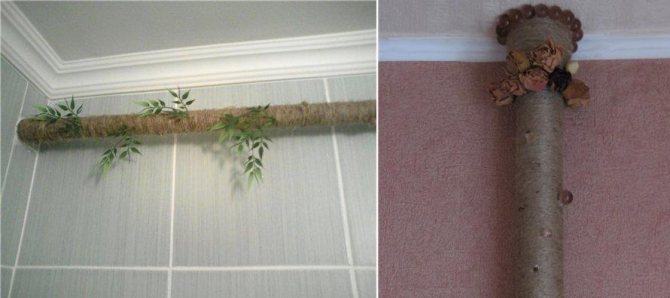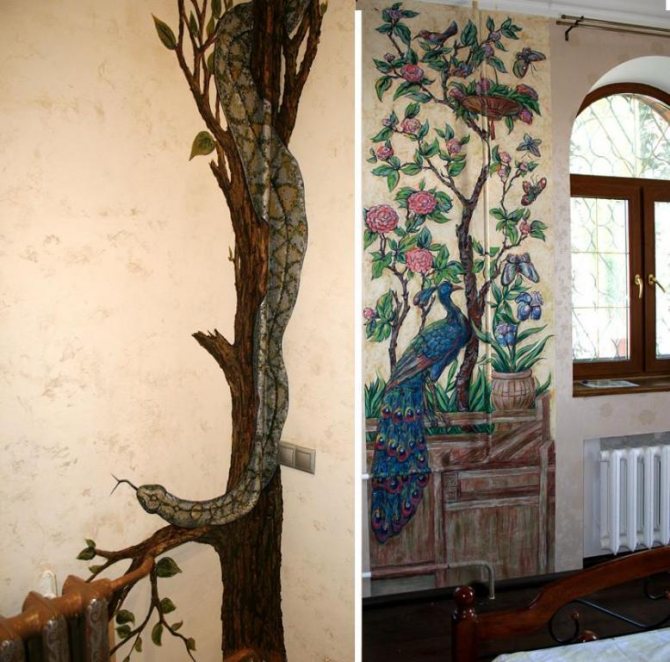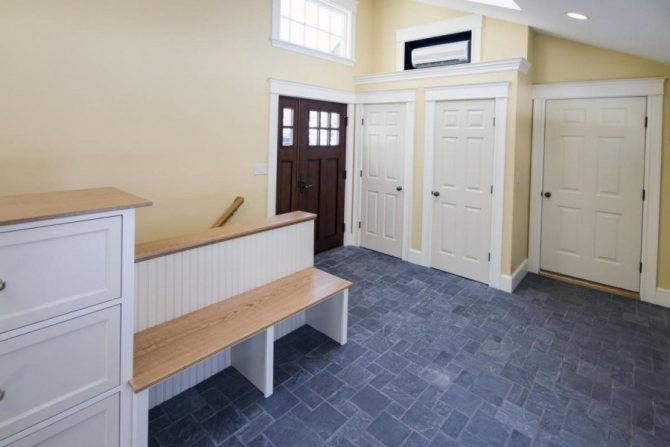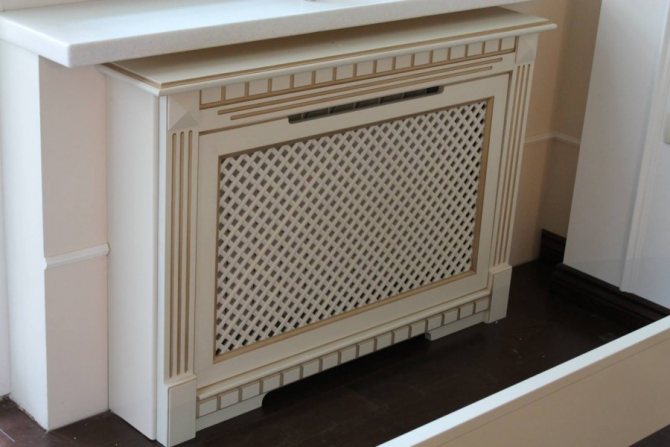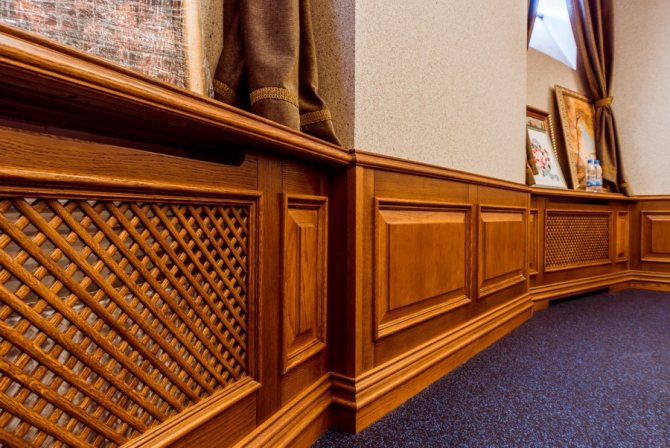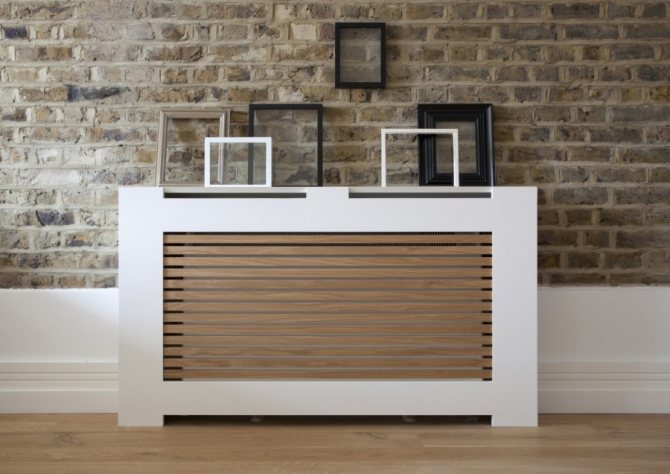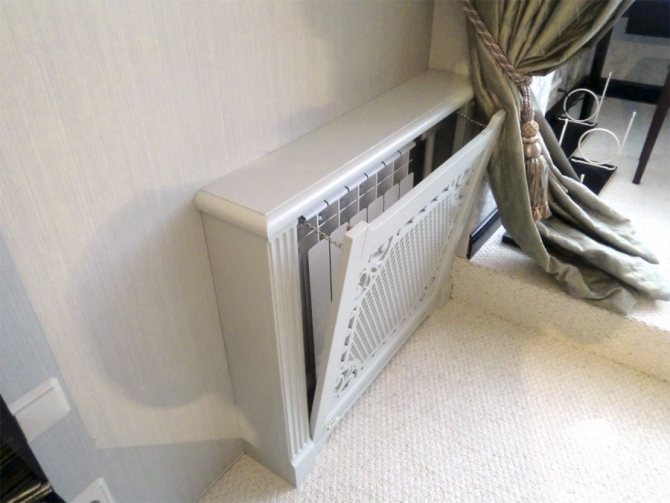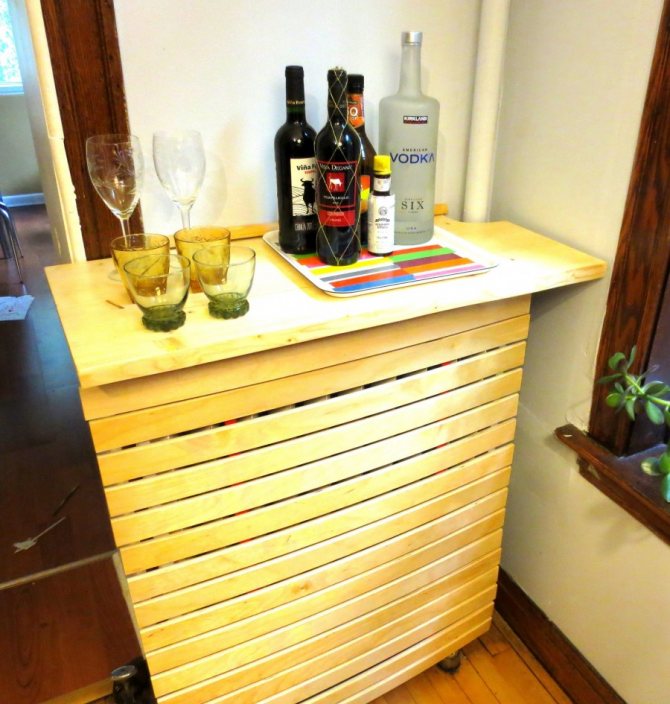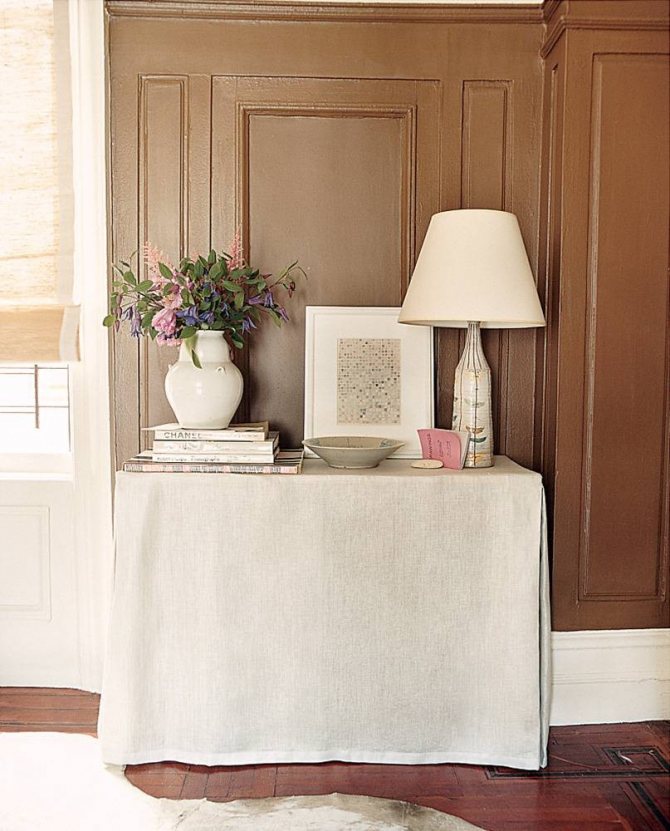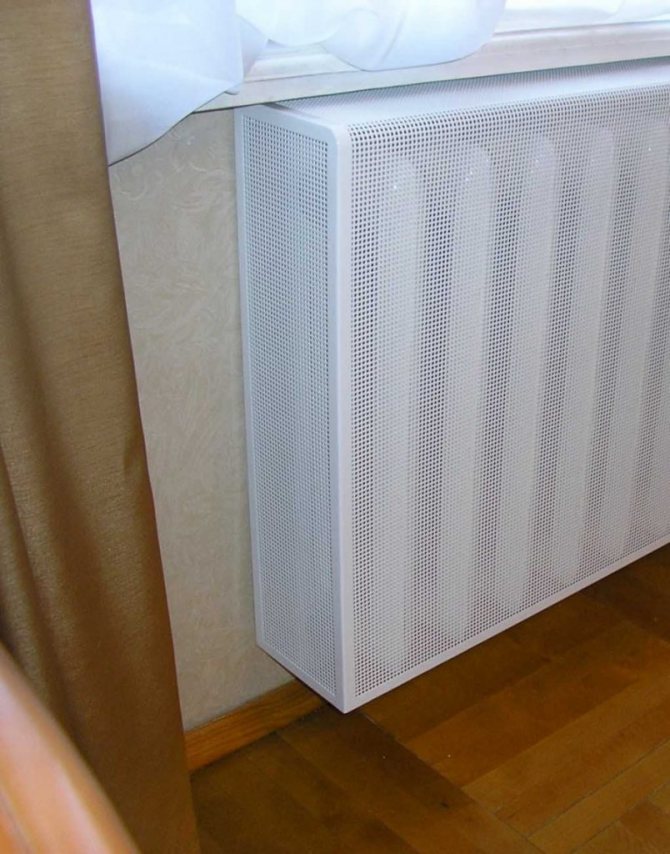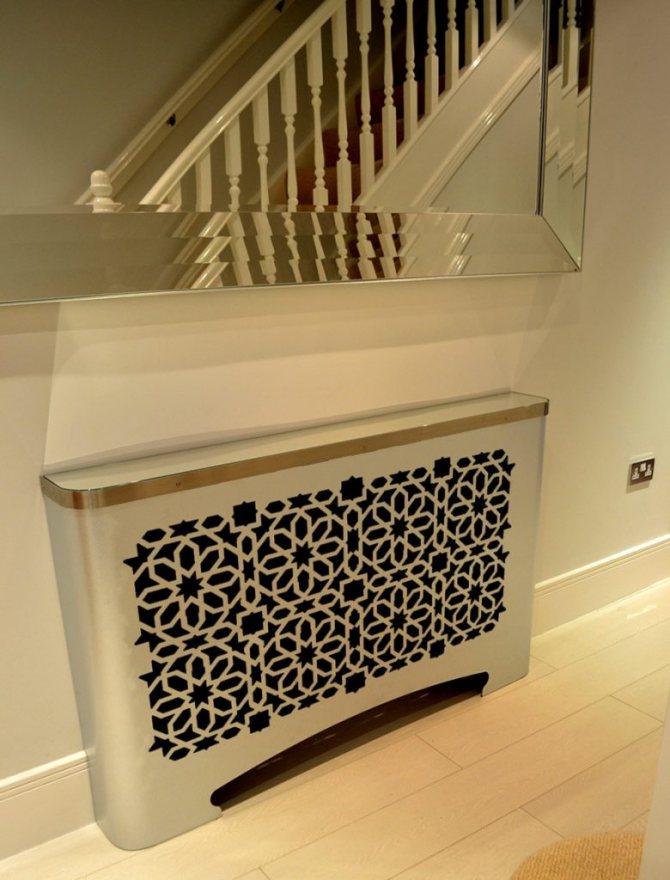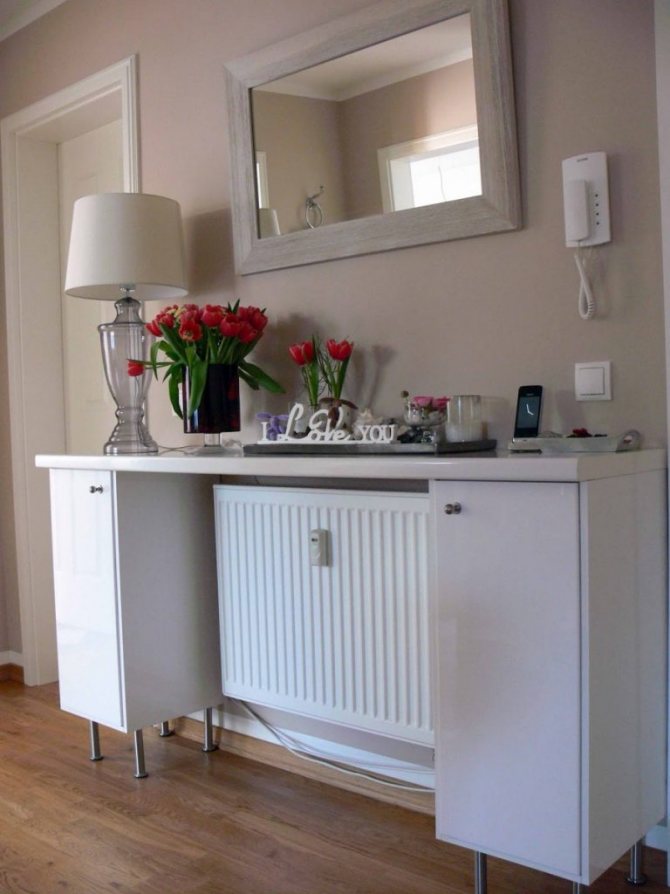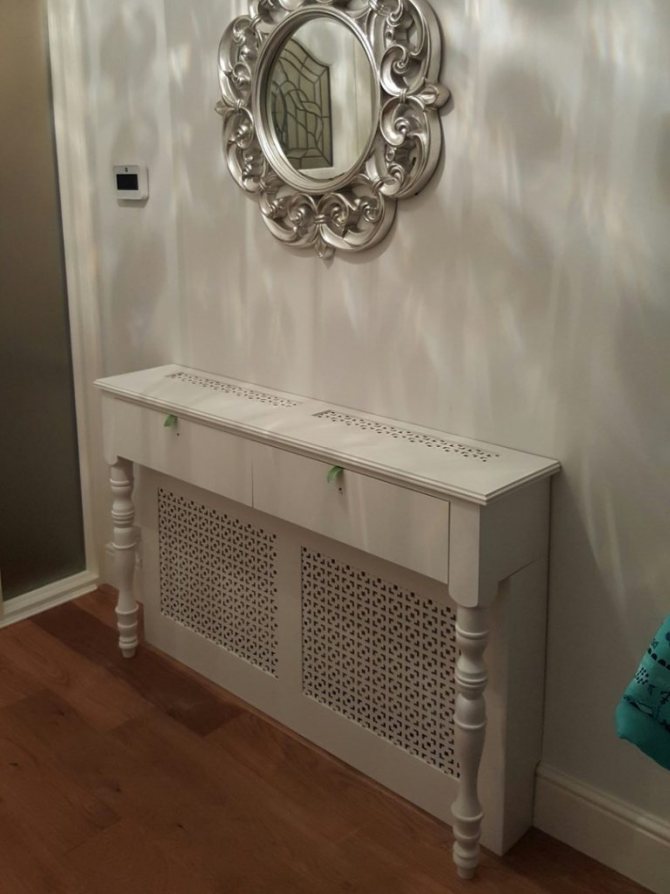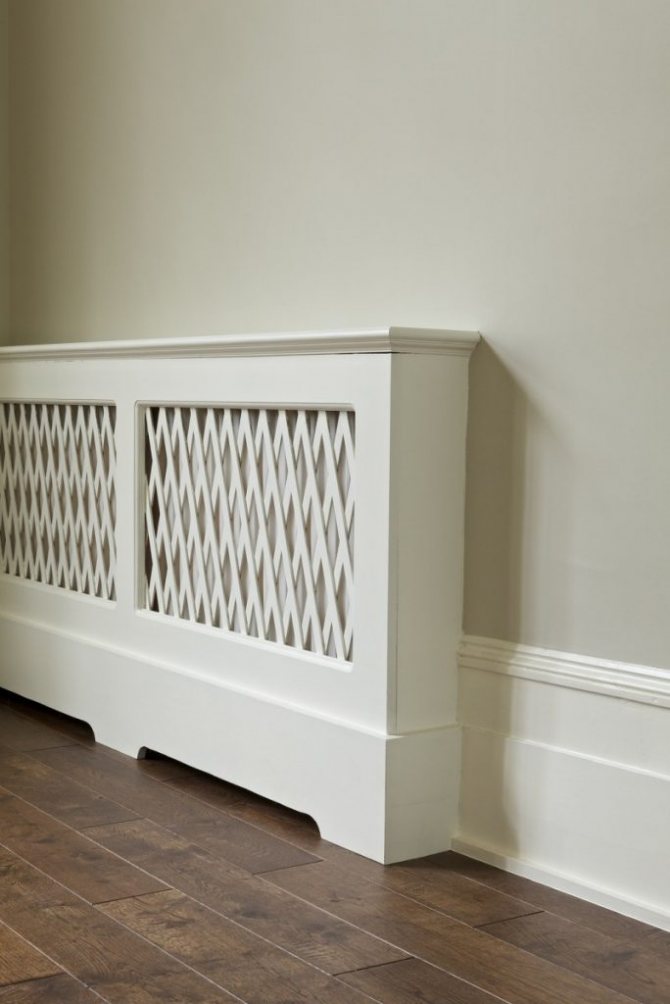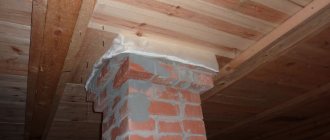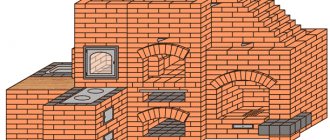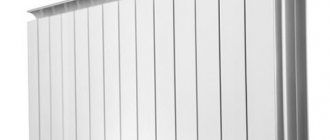Water heating of residential buildings is a boon that can hardly be overestimated. However, the delivery of this heat to apartments is not always pleasing to the eye. How to decorate a heating pipe that catches the eye and disrupts the interior of the room? This question arises very often, since any structures located along load-bearing walls with window openings visually reduce the volume of the room and cause a feeling of discomfort.
In order for batteries and heating pipes to please you with their appearance, they must be decorated.
According to building codes, access to heating pipes is required for possible repairs, so their decoration should be simple, easy to remove and create the effect of belonging to the interior of the room.
The decor of pipes, depending on the purpose of the rooms, is done in different ways.
What you need to know before choosing a decor method
Before starting work, think about whether you really need to do it. It is sometimes easier to arrange furniture so that pipes are not conspicuous. When choosing a decoration method that will help you hide the heating risers, you need to consider
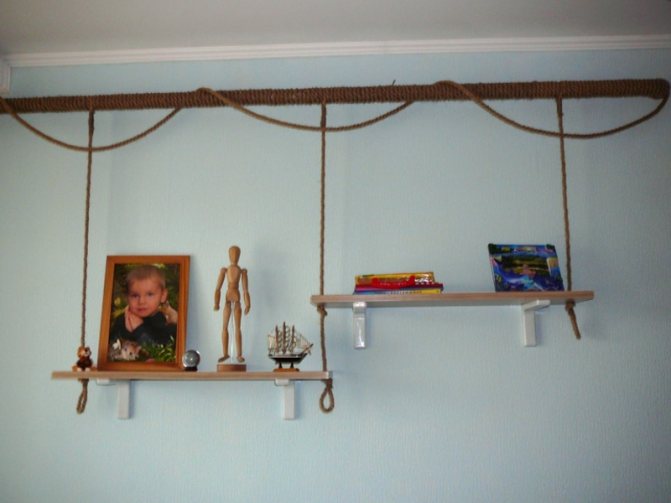
read rules:
- the heating system cannot be hidden irreversibly;
- heating pipes are also involved in heating the apartment;
- the casing that hides the pipes should be easy to dismantle and have ventilation holes.
Strive to make the decorative panel not only beautiful and unusual, but also functional. Remember that you may need to dismantle it in order to replace or repair the pipes. All solutions for masking risers in the interior come down to two solutions: pipes can be changed in appearance or hidden completely.
Masking heating pipes in the wall
Pipes, risers and radiators can be masked in several ways. A fairly popular option is to hide communications in the wall or in the field. At the same time, it is important to replace old pipes with new ones in the apartment before such work. It is better to choose plastic communications. Otherwise, leaks will occur, which are quite expensive to fix.
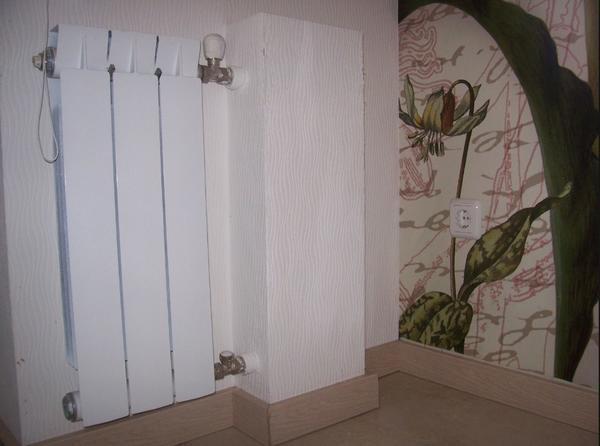

The sequence of installing pipes in the wall:
- First, a communication scheme is created. In this case, the cross-section of the pipes, thermal insulation and the thickness of the wall layer, which must be repaired, are taken into account.
- Next, you need to make a hole in the wall. This is a special recess in which communications will be placed. Provide places for elbows and tees.
- Then, insulation is put on the pipe and mounted in the provided niche. Communications should be well secured, ensuring a secure fit.
- The pipes are fastened using brackets. For this, holes are made in the wall with dowels. They will fix the device.
- Next, you should check the performance of the pipes. Only after that the niche is closed.
The second method involves sealing pipes in the floor. First, they think over the styling scheme. A groove is made in the floor. The top of the pipe should be slightly below floor level. Then the pipes are insulated, checked and laid. The communications are closed with concrete mortar. For normal water circulation, a pump is provided.
The concrete screed must be of sufficient thickness to prevent the floor from falling through during use.
But when hiding the pipes in this way, you should be prepared that in case of a leak, you will have to completely disassemble the floor or wall. That is why it is important to keep all risks to a minimum. One-piece pipes or with a minimum number of joints should be selected. This option can be called a warm floor.
Pipe painting
This is one of the most affordable and easy decoration methods, but when painting, you need to take into account a number of nuances.The work is carried out according to the rules:
- First of all, you need to remove the old coating, otherwise the paint will lie unevenly and will only spoil the appearance of the pipe. Use a hair dryer and a spatula to remove the coating. Be careful, especially if the pipe is old.
- Do not overheat the surface of the pipe during operation, otherwise the winding on the thread will burn out. In addition, keep in mind during operation that even in summer the heating system is filled with liquid.
- Lightly heat most of the paint and remove, and fight with the rest with a metal brush.
- For painting, choose alkyd enamels (for example, PF-115 and similar ones), then you do not need to prime the surface before work.
- It is enough to apply two coats.
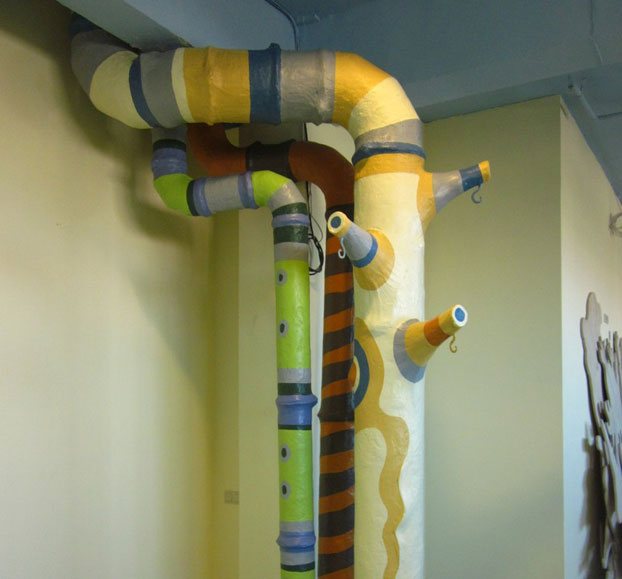

The choice of paint shade depends on the wallpaper and the interior as a whole. Some apartment owners do not just change the color of the pipes, but paint them. The design of the mural should overlap with the wallpaper or interior elements. To avoid irregularities and smudges on the surface, paint only in summer.
Laminate box, mdf
The assembly of structures made of wood-based panels and similar materials is suitable for communications located above the baseboards leading to the basement. Their base should be assembled from rails. The use of timber, boards will allow you to quickly make a strong frame, complemented by a raised MDF door or a fixed top. With the help of rails, a completely removable structure can be assembled. From above it can be covered with a laminate. The sizes and materials of different types of boxes are determined individually. The use of slats and laminate flooring will lead to significant costs. Wood panels, plywood will be cheaper, but their appearance will also be simpler. Therefore, this type of boxes is recommended to be made for rooms in which strict styling is not needed. The use of an expensive laminate is mainly for rooms with a dedicated stylistic direction (for example, modern, Provence, Scandinavian).
Use of decorative coatings
An unusual option is to install unusual casings on heating elements:
- Jute or hemp twine wrapping. The result is a stylish and functional solution. If you have a cat in your house, it will save on accessories for her - the animal will have a place to sharpen its claws. This design has a drawback - you insulate the riser.
- For interiors made in Japanese or Chinese style, decor with bamboo is suitable. To do this, cut the hollow bamboo tube lengthwise. Hide the pipe and glue the cut. To keep the pipes from standing out, place a few more banters in the room.


Lei this plant.
The disadvantage of both options is that they are not universal. Such decorative coatings can be used only in ethnic interiors. In other cases, they will be inappropriate.
Wall decoration
Here you can talk about dozens of different ways. The room will acquire new colors, become more stylish, while the heating pipes will be completely hidden. Exactly what the decor will be depends only on the owner of the house.
The most primitive option is to hide the riser behind a special canvas. It is not necessary to use only drywall. You can take other material, paint it, add decorative elements. For rooms made in the style of Provence, country or shabby chic, it is reasonable to use jute ropes. Shelves can be connected to them, artificial flowers can be placed here.
Decorative bamboo is an excellent solution for an oriental interior. The trunk is empty. How to hide heating pipes in this way in a private house? It's trite and simple. It is necessary to cut the plant lengthwise and hide communications in it. Using jute rope or some other device, the two halves are joined together.The method is quite simple, but it will fill the room with new breath and will only emphasize the oriental culture.
For a children's room, a good solution is sheathing with bright materials - ribbons, bows, textiles. The pipes can be painted in cheerful colors. Additionally, many hang various toys on them. In general, everything is done in order not only to hide communications a little, but also to adjoin them to the general interior, which is distinguished by a certain childlike spontaneity and bright colors. Everyone has a fantasy and thanks to a creative approach, the pipes cannot be hidden. And turn them into a decorative element. By the way, this practice is already quite popular in many countries of the world.
Boxes and false walls
You can make wall panels with your own hands from different materials:
- drywall;
- MDF;
- laminate;
- parquet board;
- reiki.
False wall, unlike panels, involves not just the construction of the box, but also its insulation. The design can not only be made stylish and functional, but also hidden as much as possible from prying eyes. For this, the box or wall is pasted over with wallpaper.
When erecting, it is necessary to take into account that sooner or later the box will have to be dismantled, so do not make a monolithic structure. If you choose this method of masking, leave the possibility of access to the pipes. Make an inconspicuous door or cover the pipes with a lattice screen that can be removed in minutes. However, this will not help preserve the structure if welding is required to repair the pipes.
We build a special box
A decorative box is very often used to mask heating pipes. It's easy to build. This will require the following materials and tools:
- Galvanized profile;
- Drywall;
- Putty;
- Plinth;
- The paint is the same color as the walls;
- Screwdriver;
- Self-tapping screws.
First you need to complete the frame. To do this, guides from the profile are screwed in on the floor along the perimeter of the heating pipe according to the outlined drawing. Then, they are attached to the top of the box. At their corners, profiles are fixed (in a vertical position), fixed by means of self-tapping screws. On the completed frame, drywall strips are installed, prepared in advance.
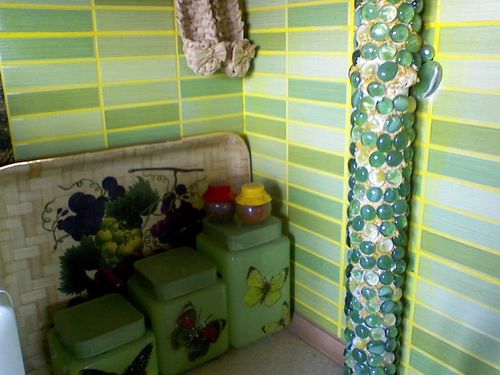

Another way
The joints of the strips are covered with a serpyanka. The resulting product is putty and then covered with paint. Optionally, the box can be decorated with tiles or wallpaper. Areas of joints between the structure and the walls and floor are covered with skirting boards.
Drapery with cornices and curtains
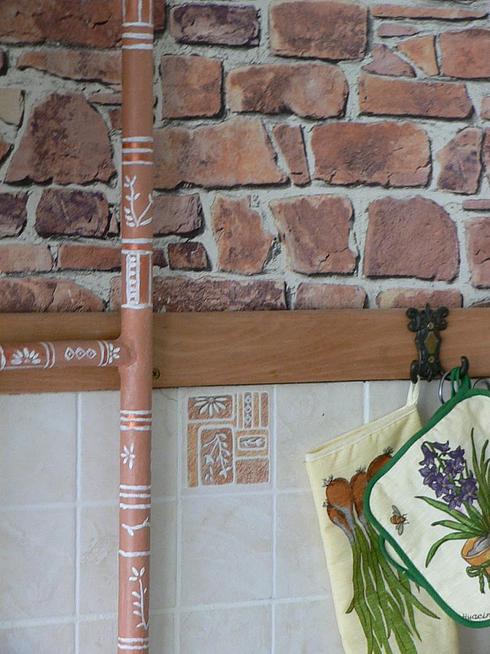

Among the many solutions, decorating with curtains is the most profitable. You can easily change the interior if you want, just change the curtains. The heat transfer of heating elements does not deteriorate, there is always access to them, hidden leaks are excluded. Curtains are easy to match to the surrounding interior. With their help, you can make the room visually larger. They differ in different colors, density, patterns.
In this case, the cornice is installed under the ceiling so that the curtains flow from it to the floor. Ideally, if the draperies hide the entire wall, then the space will look better. So that in the daytime the pipes also do not appear because of the fabric, it is necessary to hang 2 types of curtains at once: dense curtains and translucent tulle. Even during the day, curtains will cover the elements of the heating system. Decorating with curtains can be done regardless of the time of the repair. This method is suitable even in cases when you have changed the interior for a long time.
We recommend reading on the topic:
- How to choose a wood-burning boiler for heating a private house?
- Diagram of a closed heating system with forced circulation
- How is the replacement of heating pipes carried out in a new building?
- How to choose the right bimetallic heating radiators for an apartment?
Wood screen
A more expensive and beautiful option is a wood screen. It is difficult to find a ready-made version suitable for the parameters, therefore such things are made by professionals to order and are made by hand. The type of wood, matched to the color of the furniture and the appropriate texture, will serve as an amazing example of how you can hide the battery.
The pattern is chosen in the form of a sieve or weaving. They perfectly mask the flaws of the heating system and have a high heat transfer. The cost is much higher than the price of metal screens. But in return you get a part that perfectly matches the design.
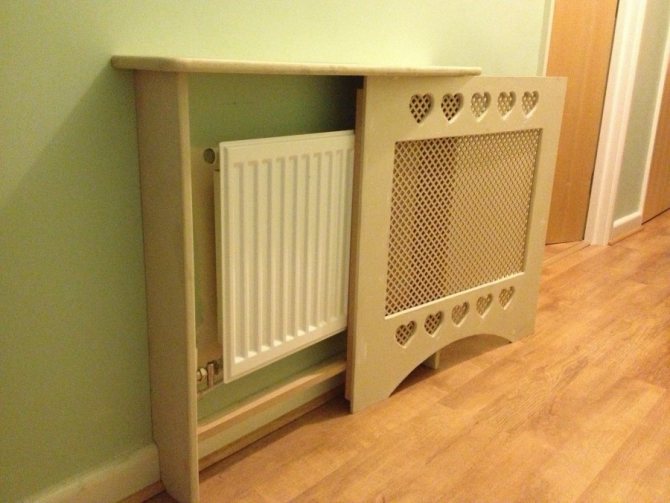

Depending on the desired result, the screen can be created in the form of a high bench, cabinet, chest, or simply with additional shelves. The advantage is the possibility of making it at home.
